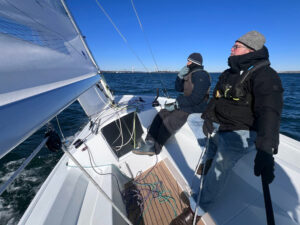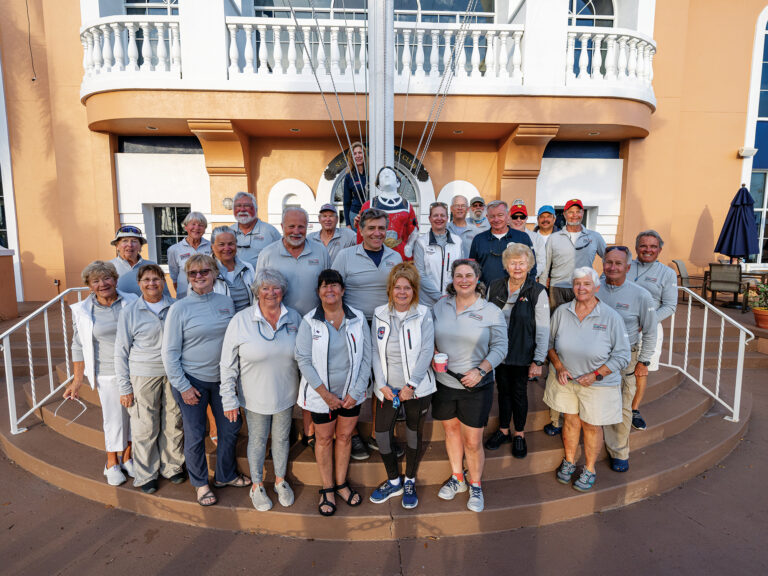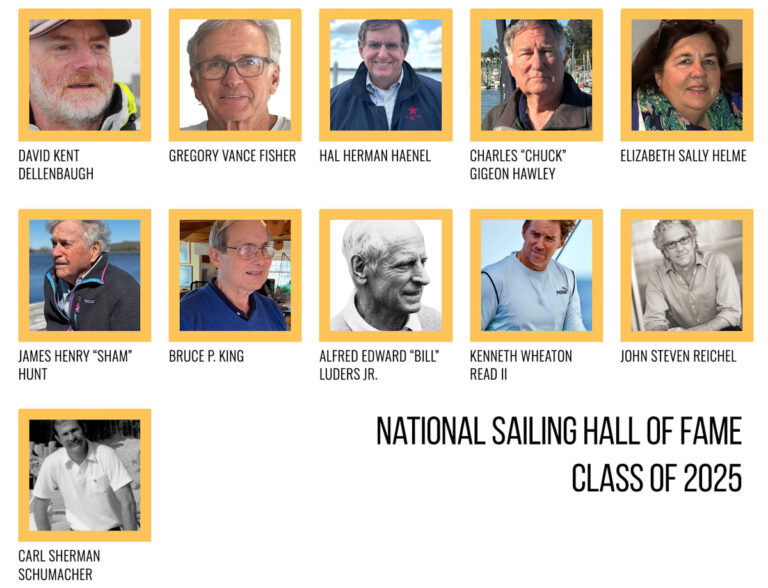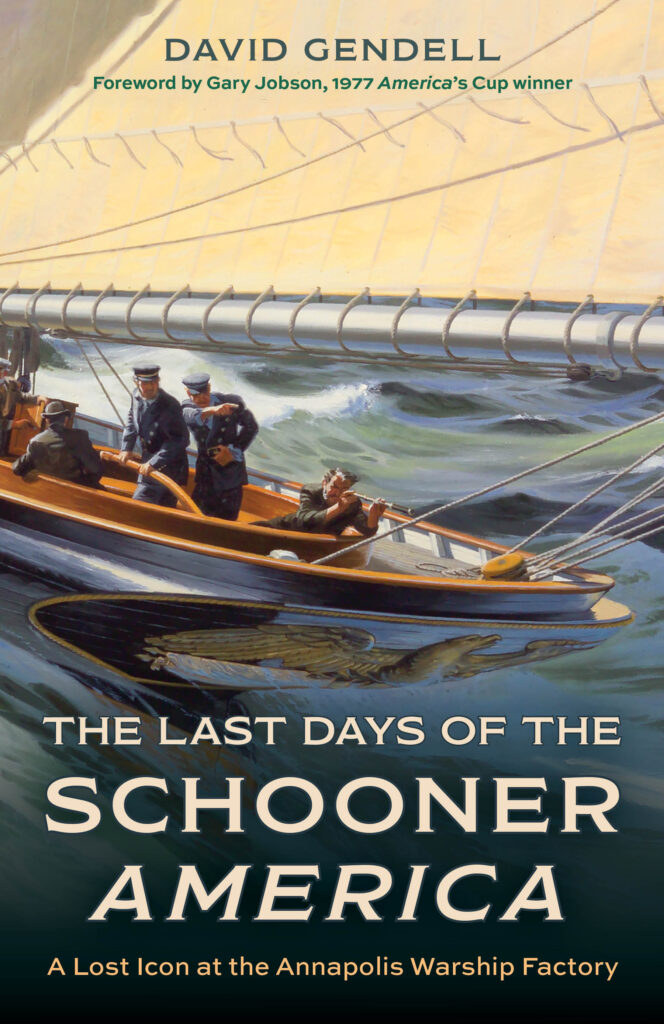
The schooner yacht America was a child star and a technological marvel. Arguably the most famous yacht ever built, she won the silver cup in August 1851, and now she represents the pinnacle of yacht racing.
The story of America’s design, build, and her first 16 weeks afloat are the stuff of legend, and for good reason: The schooner’s origin story is irresistible and watertight. The yacht was funded by New York’s wealthiest sportsmen and created specifically for international competition; an invitation to compete had been extended to the Americans from British yachtsmen based at Cowes, on England’s southern coast. The resultant design brief was ambitious: The new yacht must possess the ability to safely and swiftly cross the ocean but also to win nearshore races against yachts specifically built for that purpose. Her given name reflected the aspirations of her owners: America. About 100 feet long on deck, America was constructed on the Lower East Side of Manhattan in the winter of 1850 and into 1851.
America’s design represented the latest—somewhat radical—ideas of how to create a fast racing yacht. Low to the water, lean, and carrying her maximum beam far forward of other racing yachts, she was rigged simply but ingeniously. A maximum of four sails meant that maneuvers could be executed quickly and by a relatively small crew. These sails were carried by a pair of dramatically raked masts. The engineless America featured state-of-the art sailing technology, including tightly woven cotton duck sails and lead ballast carried low and carefully molded to fit the shape of her hull. A tiller—more responsive than a wheel—could be fitted on for racing.
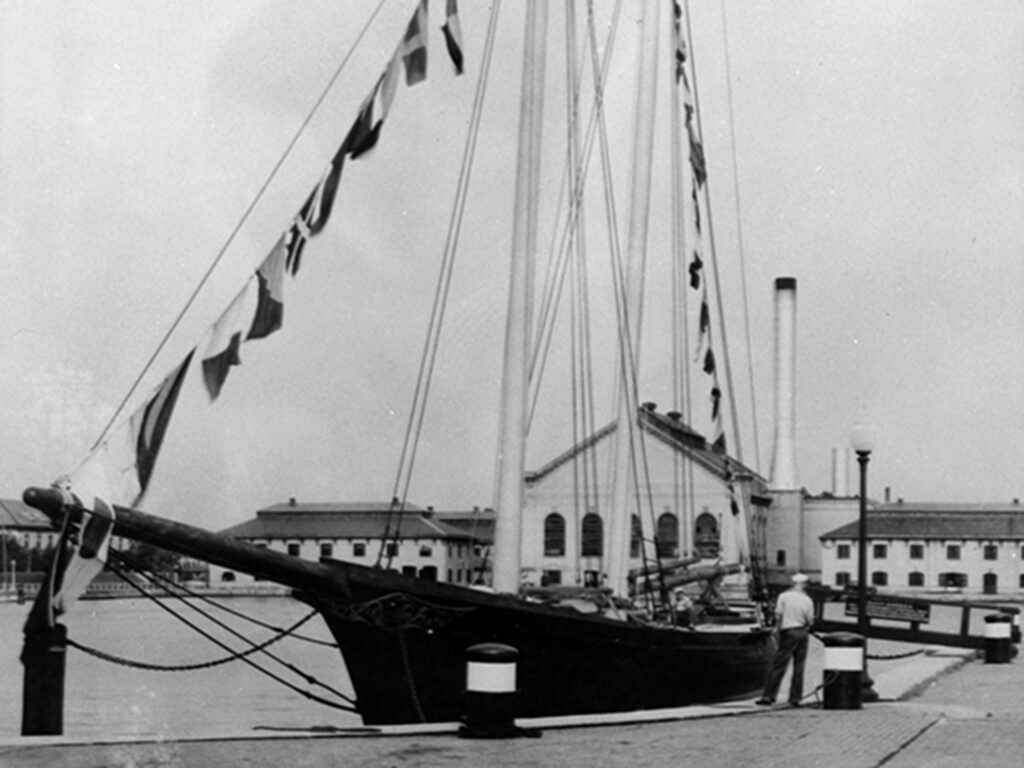
In June 1851, just weeks after her launching, and with her racing sails stowed below, America bolted across the Atlantic—New York to La Havre—in just 19 days (a passenger-carrying sailing ship of the era might complete the same route in 40 days). At Le Havre, her hull was painted black and, from there, she traveled to Cowes, England, to meet the British fleet.
On August 22, 1851, America soundly defeated the cream of the British yachting fleet in a 53-mile race around the Isle of Wight. In the wake of this landmark victory, Queen Victoria walked her decks, and her owners were awarded a 27-inch-tall 134-ounce bottomless trophy made at Garrard’s, the Queen’s Crown Jeweler. Just 16 weeks after her launch, America was a legend. Her origin story is, to this day, familiar to sailors and aficionados of naval history and continues to be widely studied, written about, discussed, and analyzed in a near fetishized manner. However, what happened to America after the win at Cowes is a decidedly less-trafficked patch of water. America’s career post-Cowes is a more checkered narrative. After winning the cup, America was at the center of a decades-long run of adventure, neglect, rehabilitations, and hard sailing, always surrounded by colorful, passionate personalities.
Recognizing an opportunity to cash in on their schooner at the top of the market—and harboring no sense of nostalgia or emotion—America’s American owners sold the schooner almost immediately after the race around the Isle of Wight. The new owner cut down her spars and added ballast. She would still be fast but never again as racy. America changed hands again and again. By 1854, just three years after her famous victory, she was abandoned on a mudbank at Cowes. Two years later, a shipwright bought her and began a restoration.
In July 1860, America was sold to a mysterious new owner who immediately put her in harm’s way. Her new owner sailed America back to North America, where the schooner was, apparently, sold into the Confederate navy, and for nearly a year, America officially served the rebel cause. In summer 1861, America carried a pair of Confederate officers across the Atlantic to Europe, and then returned to the southeast coast of North America, but only after entering at least one regatta in Europe. Through much of 1861 and into 1862, America appears to have been frequently in action on behalf of the rebel cause at the mouth the St. Johns River at Jacksonville in northeast Florida.
In spring 1862, as federal troops closed in on Jacksonville, America was pinned inside the St. Johns River at Jacksonville. Rather than risk the certain loss of the practically and symbolically valuable schooner, the rebels moved America 60 miles up the St. Johns and scuttled her in a shallow, muddy tributary—apparently with the intent of returning to refloat her at some later opportunity. Shortly thereafter, having secured the river and Jacksonville itself, US Navy sailors moved upriver, where they found and raised America. America then served on the federal blockade at Charleston and was directly involved in the capture and/or destruction of several rebel blockade runners. Finally, in May 1863, America received a reprieve. She was sent north to serve as a training vessel at the United States Naval Academy in Newport, Rhode Island.
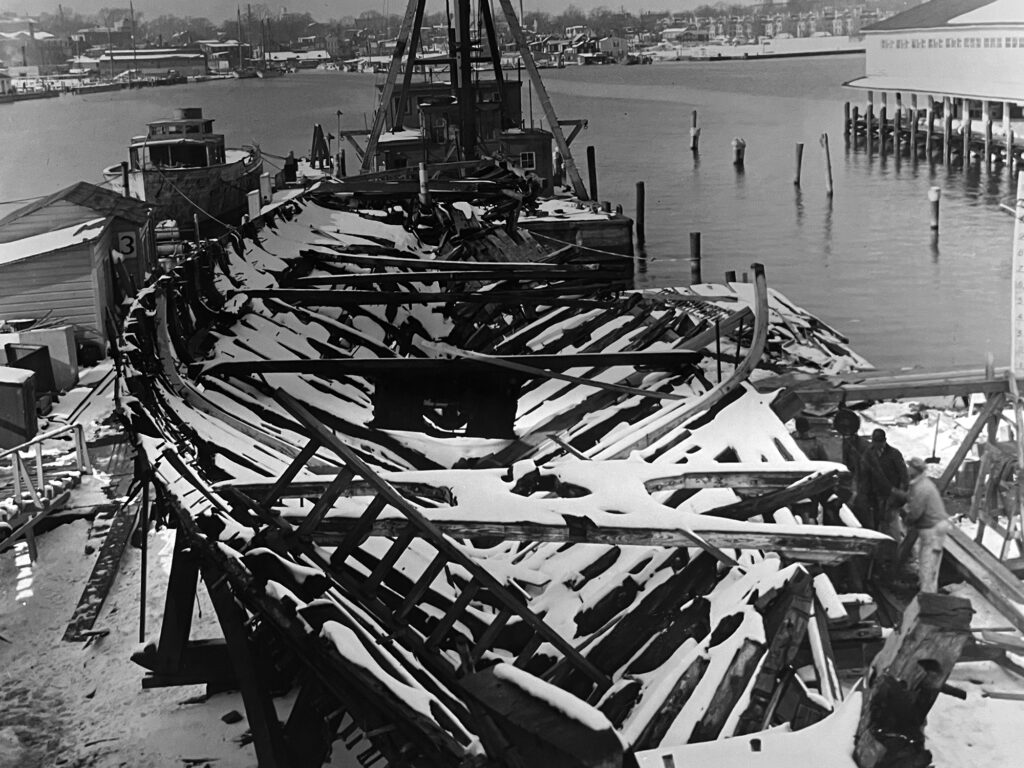
In 1873, the federal government sold America to General Benjamin Butler, a colorful Massachusetts-based politician. Butler proved to be a strong patron of the now-iconic schooner, spending lavishly on her upkeep and sailing her extensively. Butler and America were among the spectator fleet at New York for multiple defenses of the America’s Cup in the late 19th century. After Butler’s death, in 1893, the aging wooden vessel was approaching 50 years and had been “ridden hard and put away wet.” By 1921, America was rotting at her slip in Boston and offered for sale. Much of her lead ballast had been stripped off and repurposed for military purposes during the Great War. When rumors circulated that a Portuguese syndicate was interested in purchasing her and converting her to a trading packet, a group of historic-minded sailors from Boston’s Eastern Yacht Club stepped in and purchased America. The group moved America to the United States Naval Academy at Annapolis, where she was presented to the Naval Academy.
While Annapolis seemed to be a logical long-term home for the famous schooner, the Naval Academy did not have the facilities or manpower to maintain an aging wooden sailing vessel. She spent the next 20 years afloat in a slip on the brackish Severn River, serving as a photo backdrop for midshipmen and, sometimes, as a playground for local children. She was kept afloat but with a bare-minimum level of maintenance. Finally, in 1940, a move was made to restore the now 90-year-old schooner. While no official paper trail has been found connecting President Franklin Roosevelt to America’s rehabilitation, the effort was widely assumed at the time to have been endorsed by the president himself who, allegedly, envisioned America as a centerpiece of a new Navy museum at Washington. Plans were made to move America to nearby Annapolis Yacht Yard, with the facilities and staff capable of undertaking a proper rehabilitation. On a windy evening in December 1940, America floated on a king tide over the sill of the privately owned Annapolis Yacht Yard’s marine railway and was hauled ashore, according to one witness, “groaning and complaining.” She would not touch the water again.
As work was started on the America project, the Annapolis Yacht Yard’s leadership began an aggressive, effective push to secure contracts to build 110-foot wooden submarine chasers for the United States Navy and, later, to build 70-foot wooden motor torpedo boats for the British Navy and other allied navies under the auspices of the Lend-Lease Act. The facility became a vital military production partner, critical to the war effort. Meanwhile, America languished in the literal center of this activity. Some initial scoping work had been completed and a few sections replaced, but the demands of wartime shipbuilding overcame any serious rehabilitation effort. In late March 1942, a makeshift shed that had been built over America’s hull collapsed under the weight of a surprise snowstorm. After the shed collapse, any visions of a straightforward rehabilitation evaporated, no matter how powerful the project’s sponsor. A more permanent structure was constructed over the ruins, and, at the end of the war, with Roosevelt dead, America was unceremoniously broken up and the remains hauled to the Annapolis city dump.
At the time of the breakup, a handful of historic-minded yachtsmen and museum officials bemoaned the loss, but there was no widespread outcry, and it is unfair to judge the decisions and actions that led to America’s breakup through a modern lens. America’s planned rehabilitation was interrupted by the attacks at Pearl Harbor and halted after the United States’ entry into the Second World War. The iconic America, her physical form likely well beyond “saving” after the shed collapse, was, ultimately, a victim of poor timing and most unfortunate circumstances.
Editor’s note: This article has been edited for style and clarity.



